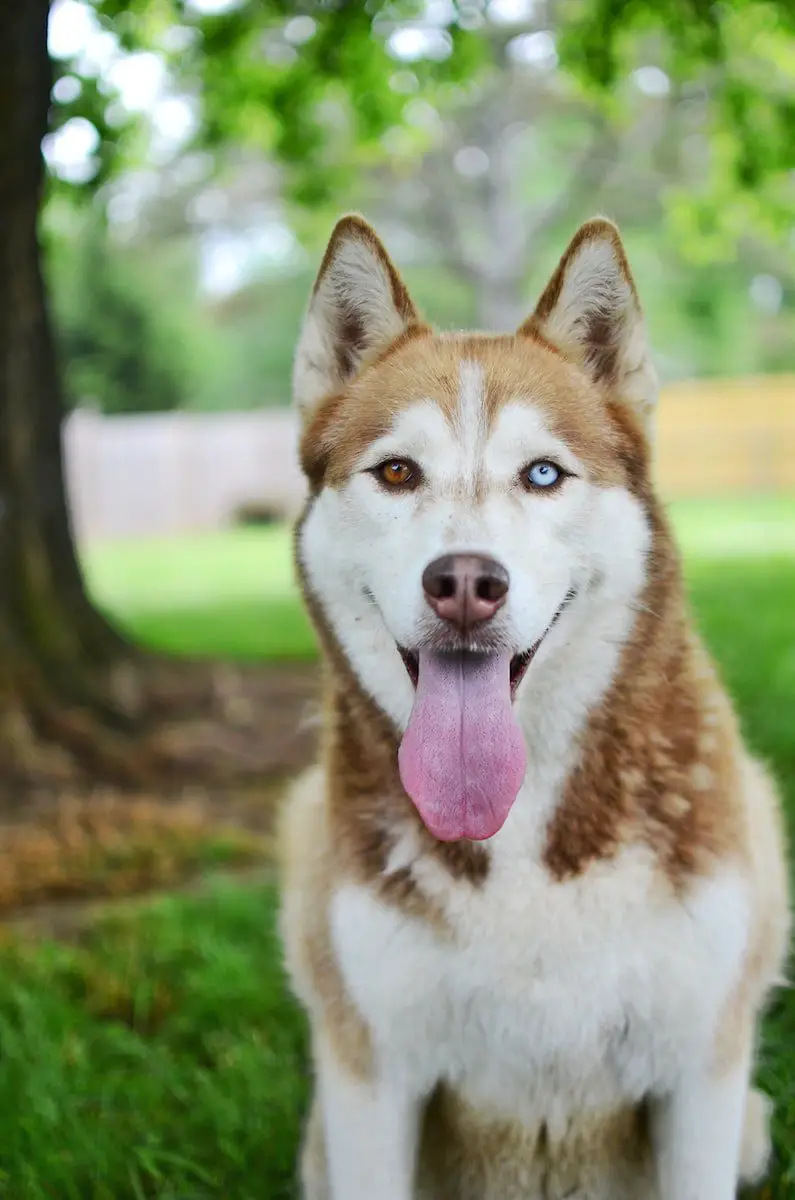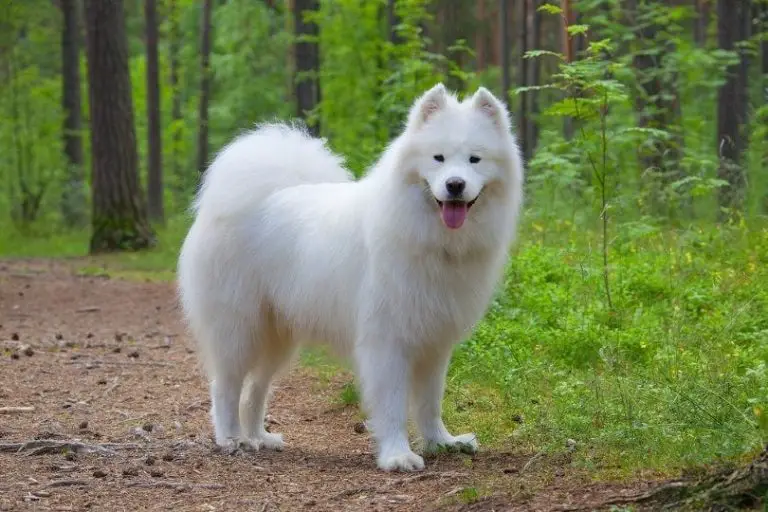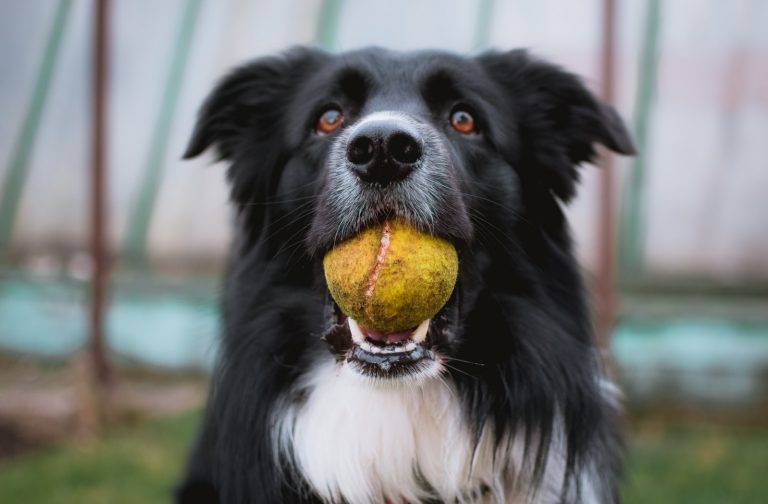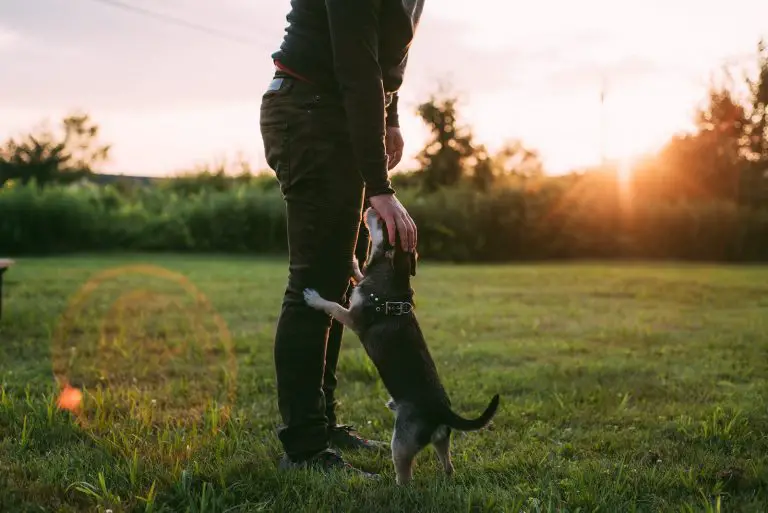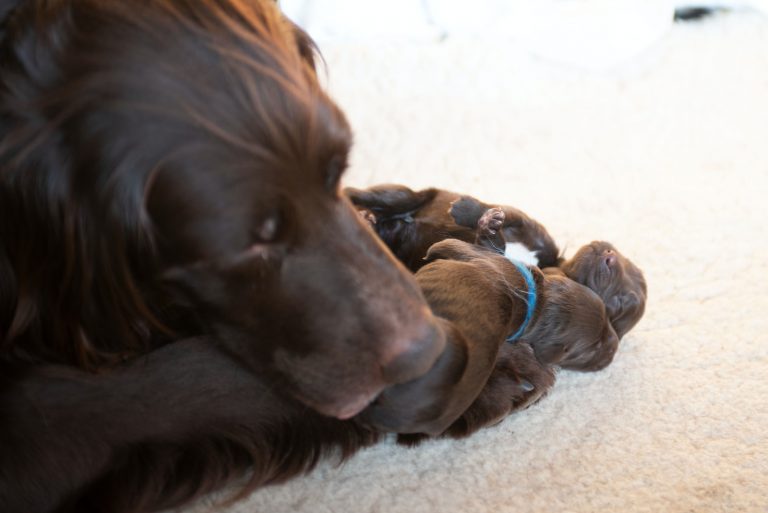Huskies with two different eye colors are considered to be one of the most beautiful dog breeds. Their eyes, in particular, are stunning. They look like wolves but are very friendly not only towards people but also with other animals.
What makes huskies the best pets is their temperament. They love being around people, but don’t get overly attached or too clingy. They give you your space while giving you all the love they have to offer as well.
A dog’s eyes are one of the most beautiful marvels of nature. There are dogs with brown eyes and those with blue. Then some have eyes of different colors. They look magical! Seeing a dog with different colored eyes is quite a sight to witness.
Contrary to popular belief, many dogs do have different colored eyes. Most of the time, it is a result of genetic tweaks. There is nothing wrong with their eyes, and their vision usually is not affected by the difference in eye colors.
The phenomenon of two-colored eyes is pretty common among huskies. Huskies with two different colored eyes are known as bi-eyed huskies. But what causes this?
In this article, you will learn everything about a husky with two different colored eyes.
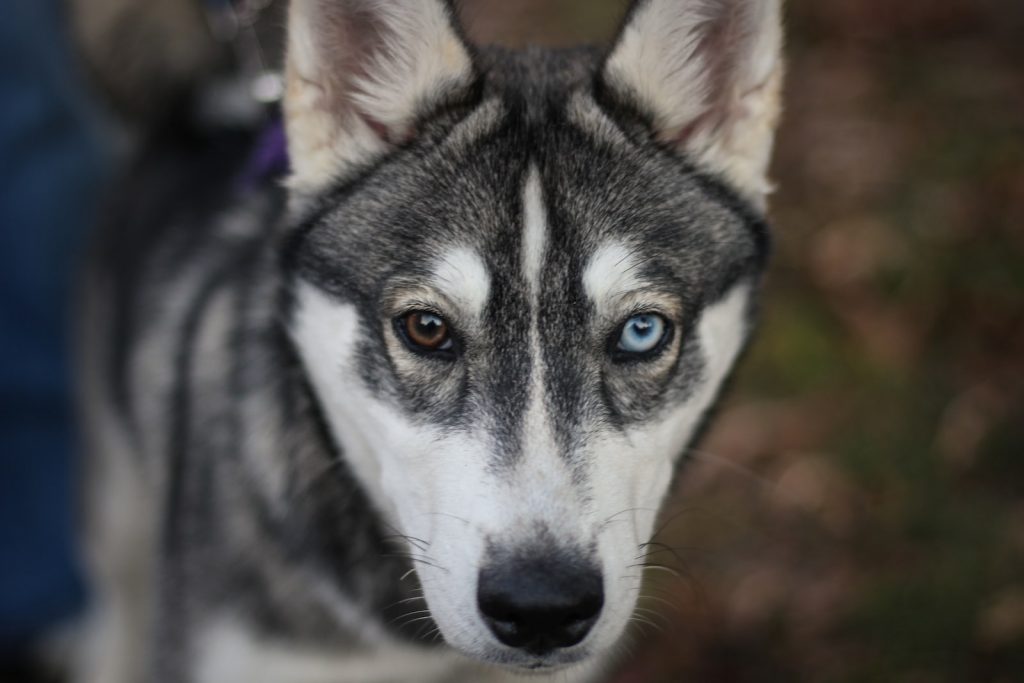
Heterochromia in Huskies
Sometimes also referred to as ‘odd eyes,’ two different colored eyes in dogs are referred to as heterochromia. It is not limited to dogs only and can also occur in cats.
Heterochromia is more common among some dog breeds as compared to others. It is common among Siberian Huskies, Dalmatians, Shetland Sheepdogs, Shih Tzus, Dachshunds, Chihuahuas, Border Collies, Australian Shepherds, and Australian Cattle Dogs.
What Causes Heterochromia in Huskies?
The colored part of an eye is called iris. The iris’ color is determined by the amount of a pigment present called melanin. Most dogs have a high amount of melanocytes in their eyes. This gives their eyes the usual golden-brown or dark-brown color.
Dogs with eyes other than these colors have a genetic mutation that causes an increase or decrease in the amount of melanin present in their eyes. The absence of melanocytes in their eyes causes their eyes to become blue, green, or other colors.
What Affects Heterochromia in Huskies?
Some huskies may develop heterochromia over time, while for some, the condition may be hereditary. Huskies with genetic heterochromia have the following three variations:
Complete Heterochromia: Heterochromia irides are also known as heterochromia, and dogs with this condition have two completely different colored eyes.
Sectoral Heterochromia: Huskies with sectoral heterochromia have a blue iris while the rest of the eye is of a different color.
Central Heterochromia: Huskies with central heterochromia have different colors within the same iris. The eyes of these dogs give a haloed or spiked appearance, which makes them look magical.
Most of the time, huskies have complete heterochromia, but they can have either sectoral or central heterochromia. Other dogs tend to have more central or sectoral heterochromia.
Acquired heterochromia occurs because of the loss of pigmentation within the dog’s iris. This happens because of some other cause rather than a mutation of genes or heredity. It is commonly caused due to certain medications, physical injuries, or other inflammatory conditions.
The eye color in huskies and other dogs may also be affected by other causes. If the eye color is different because of a disease or injury, it can cause severe discomfort among the animals. It may also lead to loss of vision if left untreated.
Health Issues in Huskies With Two Different Eye Colors
Hereditary heterochromia is not a cause for concern in huskies. It is something that is inherited by them from their parents. However, if you notice a change in the eye color of your pet husky over time, it is best to take them to the veterinarian.
Is Heterochromia Bad for Huskies?
Huskies are more prone to eye problems. However, most of these problems are not caused by heterochromia. Heterochromia does not contribute to eye-related issues.
If the husky in question was born with different colored eyes, there is usually nothing to worry about. However, if the color changes over time, then it may be a cause for concern.
If your husky’s eyes are becoming cloudy, are changing color, or become unusually light in color, you recommend that you take them to a veterinarian. It may be an indication of an underlying issue that may require help.
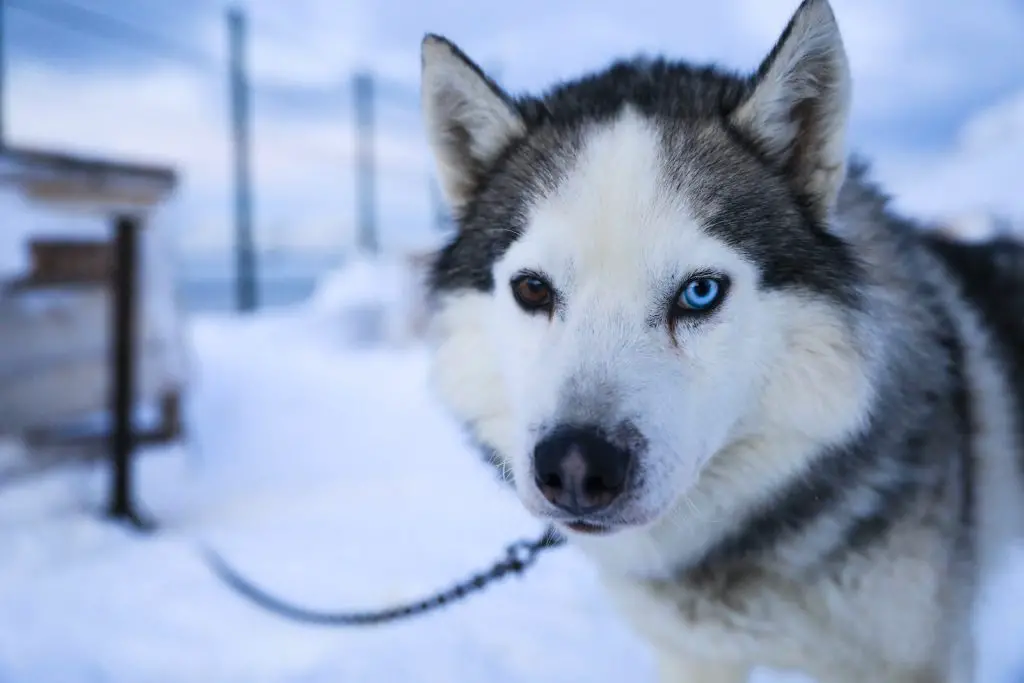
What Are the Different Eye Colors of Huskies?
Huskies are one of the most stunning dog breeds. Now we’ll explore some of the variations of husky eye colors that are commonly seen.
Blue is the most common eye color in Siberian Huskies. 4 out of 10 huskies have blue eyes. This is also the eye color that is accepted by the American Kennel Club. All newborn huskies have blue colored eyes. They may change their eye color later in life if they are destined to.
Bi-eyed huskies have one brown colored eye while the other eye is blue. These are rare as compared to blue-eyed huskies. Two different eye colored huskies look like they’ve come right out of a fairy tale.
Parti-colored eyes in huskies are the rarest variation of all. Only 5% of all the huskies have it! Parti-colored eyes have two colors blended in the same eye. Huskies with such eyes are hard to find, and you are lucky if you have them as a pet.
Brown eyes are also ubiquitous. You will find every 4 out of 10 huskies with both eyes of brown color. Huskies have many different shades of brown colors in their eyes, from light brown to medium and dark brown.
Can Huskies Change Their Eye Color?
One of the most common questions asked about huskies is whether they can change their eye color over their lifetime or not. As mentioned before, all newborn huskies have blue colored eyes. The eye color starts changing around 5-8 weeks if it is destined to change. It depends on the concentration of melanin in their eyes and the genes they have inherited.
The eye color of huskies usually settles by the time they are 3-4 months old. However, some huskies keep changing the color of their eyes until they have reached 6 months of age. Huskies don’t usually change their eye color once they are over a year old.
If your pet husky is an adult of over a year and changes its eye color, then you must take them to the veterinarian as soon as you can. It can be an indication of an underlying problem. It is best to rule out any health issues by taking them to the vet.
Do Blue-Eyed Huskies Go Blind?
Many people believe that blue-eyed huskies and other dogs have a problem in their vision, and they are more likely to go blind as they age. However, there is no scientific evidence regarding this.
Sudden development of blue eyes in your pet husky or any other dog may be a symptom of an underlying issue, but it doesn’t mean that the dog will lose its sight anytime soon.
The notion that blue-eyed huskies are more likely to go blind is only a myth. However, if you notice a blue haziness in its eyes, which was not there before, it can be an indication of corneal dystrophy or cataracts.
However, being born with blue eyes doesn’t increase the risk of any eye problems in the future.
Huskies with blue eyes lack melanin in their eyes. However, they do contain pigment. Some people say that brown eyes are less prone to get affected by conditions such as cataracts.
However, there is no scientific evidence behind it. Some people also believe that sun damage may cause cataracts in dogs, but that isn’t the case. It is caused by the inheritance of recessive genes from the parents.
It should be noted that Siberian Huskies tend to have more health issues than other species of huskies. 8-10% of Siberian Huskies usually have a hereditary eye condition that can lead to issues later in life. Many people believe that this is caused by heterochromia, but there is no scientific evidence for it.
What Are the Common Eye Problems in Siberian Huskies?
Siberian Huskies usually face three main eye problems. However, these problems are not because of heterochromia, even though many people believe it so to be.
There are three main eye-related issues that huskies may face. These include corneal dystrophy, juvenile cataracts, and progressive retinal atrophy. Let’s find out more about each condition in a little more detail.
Siberian Huskies are more prone to juvenile cataracts as compared to other dog species. The signs of this issue usually start showing when the huskies are between 6 months to 1 year in age. Some huskies may show symptoms of juvenile cataracts as early as 3 months of age.
The common symptoms of juvenile cataracts include haziness and cloudiness in the eyes. This is caused by the buildup of proteins in the eyes, which ultimately leads to the lens getting blocked.
Young adult female huskies are more prone to corneal dystrophy as compared to males. It is a rare eye condition as compared to cataracts. The typical symptom of corneal dystrophy is the development of a hazy blue film on the cornea. Many people usually mistake it for cataracts.
Progressive retinal atrophy is an eye condition that affects the retina. Huskies usually lose their night vision first if they suffer from progressive retinal atrophy. Later on, they may also lose their day time sight and ultimately go blind.
This condition is more common among male huskies as compared to females. Male huskies can go blind at a very young age if they suffer from progressive retinal atrophy.
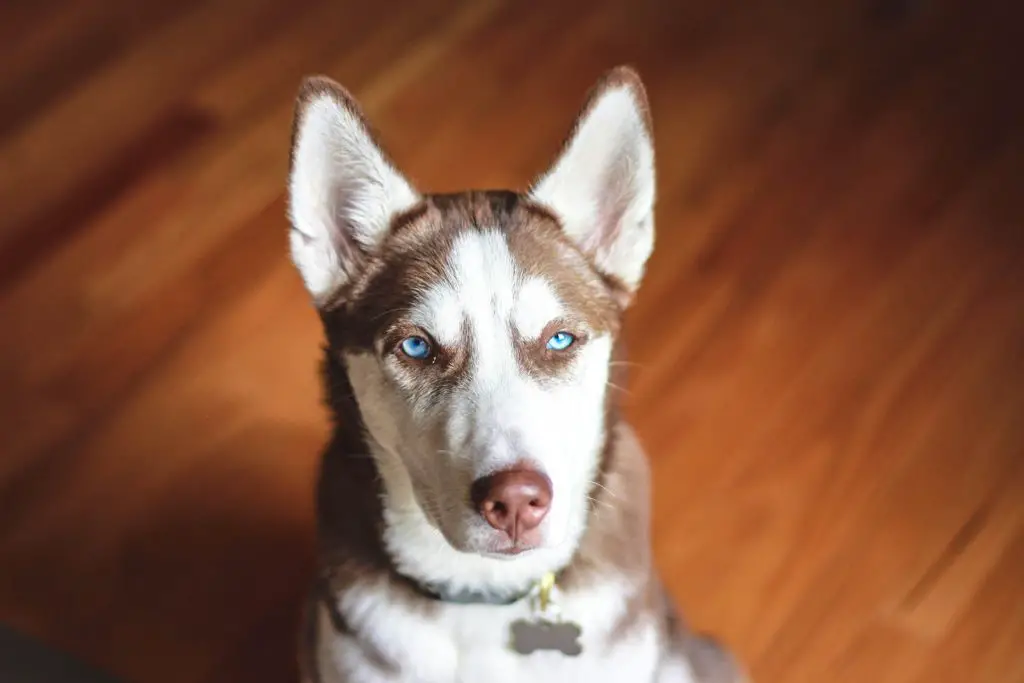
Should I Take My Husky for Eye Check-Ups?
Like with every other pet, we do recommend that you take them for regular check-ups. However, a husky with two different colored eyes has nothing to do with this suggestion. It is recommended that you have them checked by a board-certified veterinary ophthalmologist annually.
All Siberian Huskies should be tested for inherited eye diseases before you take them to your home. It is the responsibility of the breeders to get eye tests done on huskies each year.
However, once you take them home, you should visit a veterinary ophthalmologist at least once a year. This will help prevent any serious eye conditions, and you can start treatment on your husky as soon as you notice any eye or vision problems.
You should also get your huskies checked for glaucoma. It is a common eye problem where the fluid pressure inside the eyeball becomes too high. Each eye of a Siberian Husky has drainage channels to relieve pressure off their eyeballs. However, if any of these channels are blocked or too narrow, fluid pressure will start to build up in their eyes.
If you notice pupil dilation in your husky or one eye appears to be larger than the other, you should immediately take your dog to a veterinary ophthalmologist. They will run some tests to determine the probable cause of this and start the necessary treatment.
Don’t wait too long to take your dog to the veterinarian as delaying; it can lead to worse outcomes. The eyeball may need to be removed if the condition worsens beyond treatment.
It is crucial to examine your dog’s eyes regularly. You see your dog every day, and you will be the first to notice any signs of ocular problems in them. Make it a habit to sit your dog in front of you in a well-lit area and check their eyes.
Look for any signs of infection or injury. Do you notice any puffiness, redness, or excessive discharge? Is there too much crustiness or fluid in the eyes? These can be signs of infection, and you should take your husky to a veterinarian immediately. You should also take your pet to a veterinarian if they are constantly pawing at their eyes.
Check your husky for cataracts and blindness. Keep an eye on the size of their pupil. A difference in the size of the two pupils indicates a problem that needs to be addressed immediately.
Do you notice that your husky has trouble seeing you? Do they constantly bump into you or other things? Try this: throw a toy at a distance. Are they unable to see it?
These may be signs of their vision getting weak. Don’t wait too long and take them to a veterinarian. Vision impairment is common among huskies, and waiting too long can increase the risk of them going blind. The veterinarian will check them and figure out if there is any problem in their vision.
Last Few Words on Husky With Two Different Colored Eyes
So, there you have it. A detailed answer to the mystery why a husky with two different colored eyes exist.
Huskies are one of the most beautiful dog breeds out there. Their fascinating eye color is a feature that stands out a lot. From beautiful brown colored eyes to hauntingly beautiful blue colored ones, their eyes have a huge fan following! Huskies with two different colored eyes look even more enchanting.
Diagnosing eye problems in your huskies is not an easy task. Therefore, you should schedule an annual visit to a veterinarian ophthalmologist to rule out any health issues that may need treatment. This will help you detect eye problems in huskies early and prevent them from aggravating.
References
- Bainbridge, Danny. “Siberian Husky Eye Colors (All About The Different Types).” HuskyPuppiesInfo.com, 16 Apr. 2020, www.huskypuppiesinfo.com/siberian-husky-eye-colors/.
- Harry. “Why Do Huskies Have Different Colored Eyes?” My Happy Husky, 15 May 2020, www.myhappyhusky.com/why-do-huskies-have-different-colored-eyes/.
- Brown, Jackie. “Let’s Talk Dogs With Different-Colored Eyes, or Heterochromia in Dogs.” Dogster, 20 June 2018, www.dogster.com/dog-health-care/dogs-with-different-colored-eyes-heterochromia-in-dogs.

